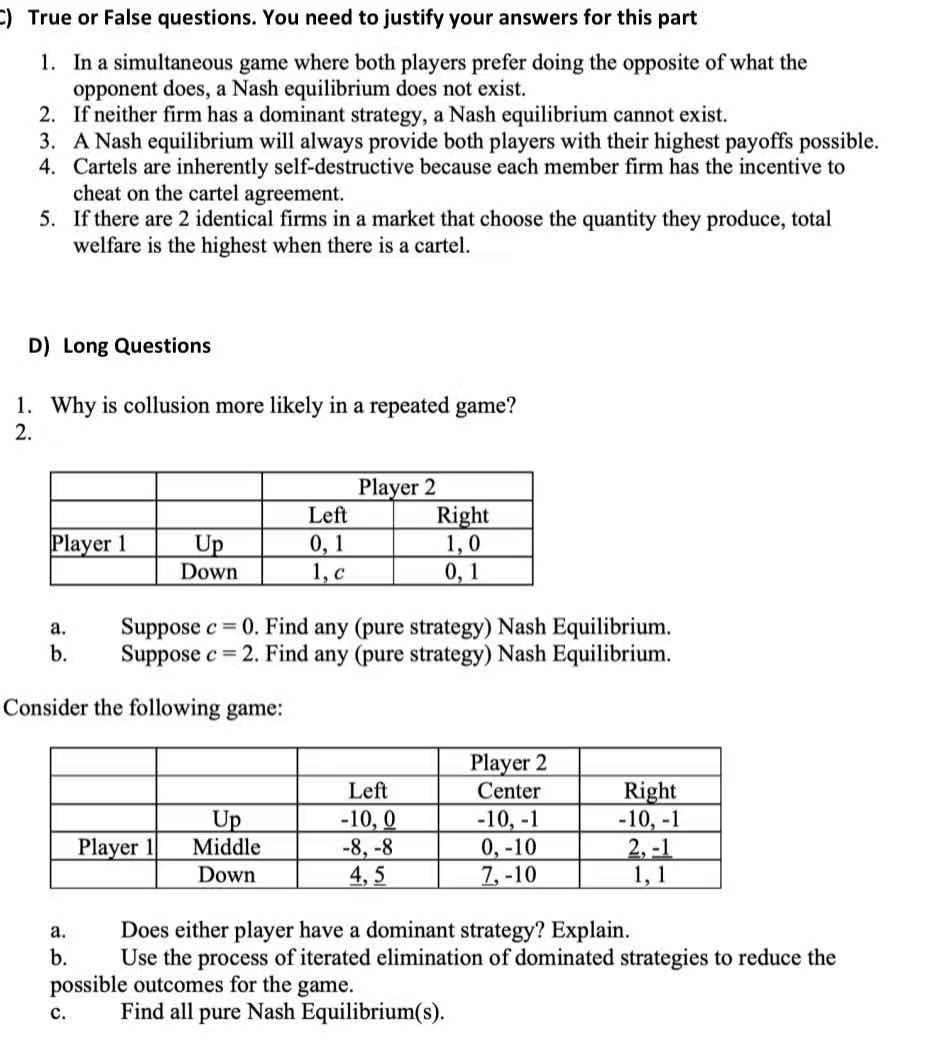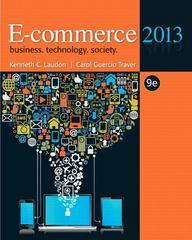

2} True or False questions. You need to justify your answers for this part 1. In a simultaneous game where both players prefer doing the opposite of what the opponent does, a Nash equilibrium does not exist. 2. If neither rm has a dominant strategy, a Nash equilibrium cannot exist. 3. A Nash equilibrium will always provide both players with their highest payoffs possible. 4. Cartels are inherently self-destructive because each member rm has the incentive to cheat on the cartel agreement. 5. If there are 2 identical rms in a market that choose the quantity they produce, total welfare is the highest when there is a cartel. D] Long Questions 1. Why is collusion more likely in a repeated game? 2. a. Suppose c = 0. Find any (pure strategy) Nash Equilibrium. b. Suppose c = 2. Find any (pure strategy) Nash Equilibrium. Consider the following game: a. Does either player have a dominant strategy? Explain. 13. Use the process of iterated elimination of dominated strategies to reduce the possible outcomes for the game. c. Find all pare Nash Equilibrium(s). 4. The following is a simplified duopoly model of competition between two firms. Firms simultaneously choose the quantity of outputs to produce, and then profits are realized. Each firm is restricted to producing 25, 35, 50 or 100 units of output. The details of how the payoffs are derived are unimportant because payoffs are all given in the table below. Firm 2 02 = 25 35 50 100 01 = 25 125, 125 100, 140 63, 125 -63, -250 Firm 1 35 140, 100 105, 105 53, 75 -123, -350 50 125, 63 75, 53 0, 0 -250, -500 100 -250, -63 -350, -130 -500,-250 -900, -900 Find the Nash equilibrium(s) in the game. 5. Suppose the demand for pizza in a small isolated town is p = 10 - Q. There are only two firms, A and B, and each has a cost function TC = 2 + q. Determine the Cournot equilibrium. 6. Consider a market with just one firm. The demand in the market is p = 18 -O and the firm has a linear cost function C(Q) = 20. a. How much output will this firm produce. What will be the profit and consumers surplus? b. Suppose a second firm with the same cost function enters the market and the two firms compete in a Cournot style (simultaneous output choice). What will be the equilibrium price and quantity in the market? What is the total market profit and CS? 7. Two firms sell identical products and compete as Cournot (price-setting) competitors in a market with a demand of p = 150 - Q. Initially, each firm has a constant marginal and average cost of $3 per unit of output. a. Compute each firm's best response function. Plot each of these functions on a graph with q1 on the horizontal axis and q2 on the vertical. b. Compute the Cournot equilibrium quantities. c. Suppose that firm I's cost rises to $4 per unit and firm 2's decreases to $2. On a graph, show how this will change the best response functions. How will the equilibrium change according to the changes you made on the graph? 8. Suppose the demand for pizza in a small isolated town is p = 10 - Q. There are only two firms, A and B. Each has a cost function TC = 2 + Q. Determine the equilibrium quantities of each if firm A is the Stackelberg leader










